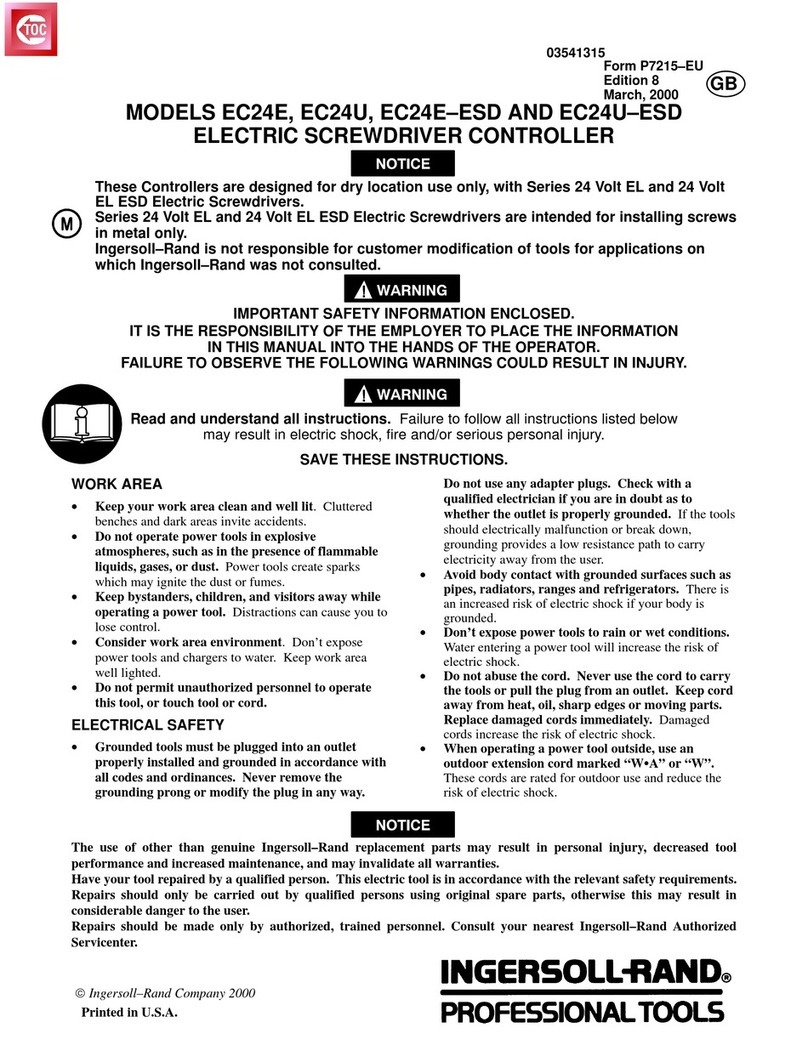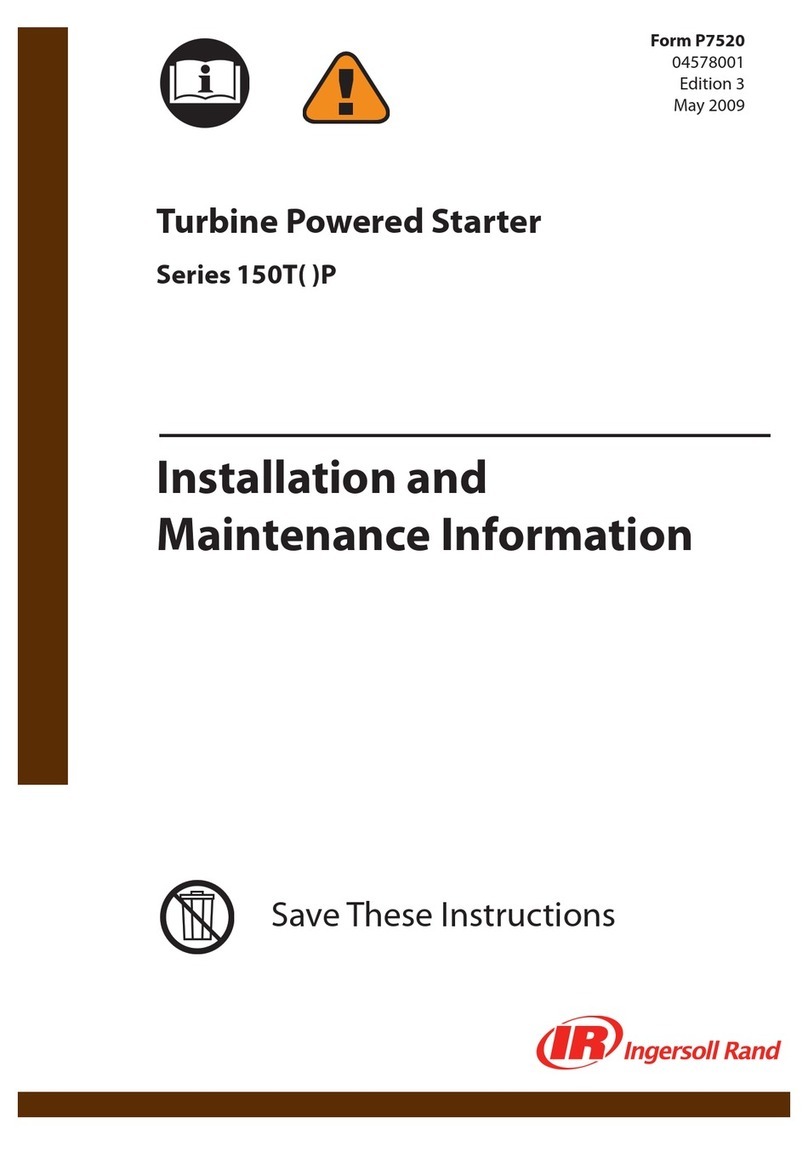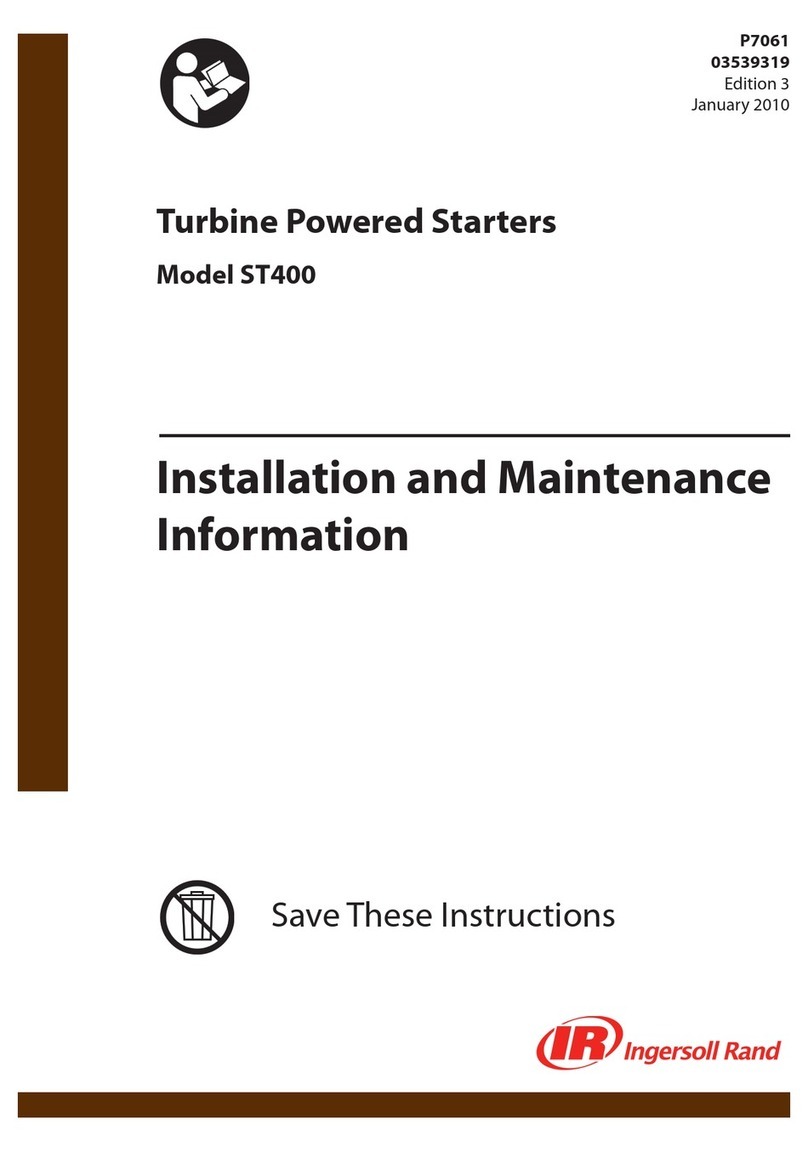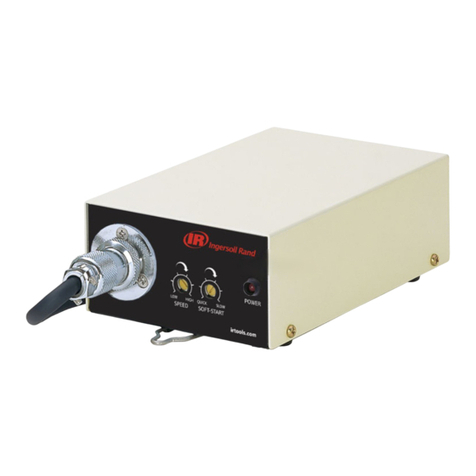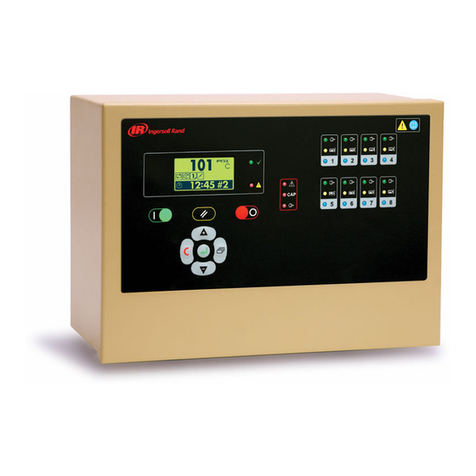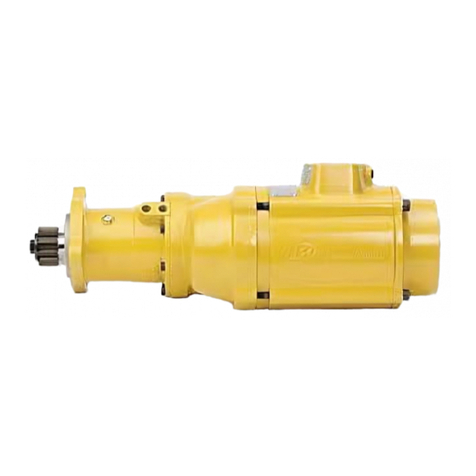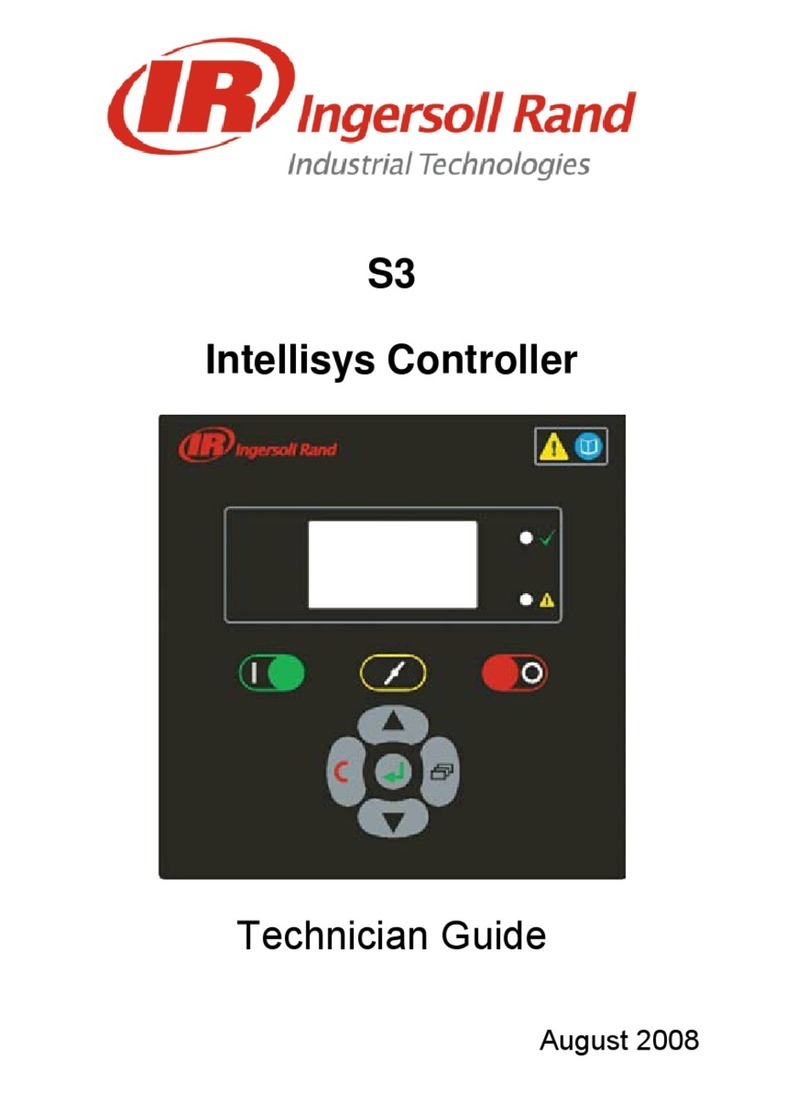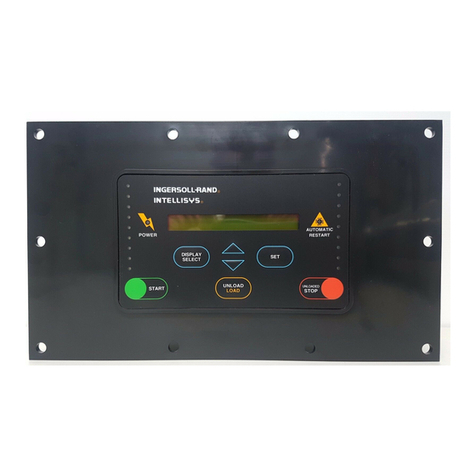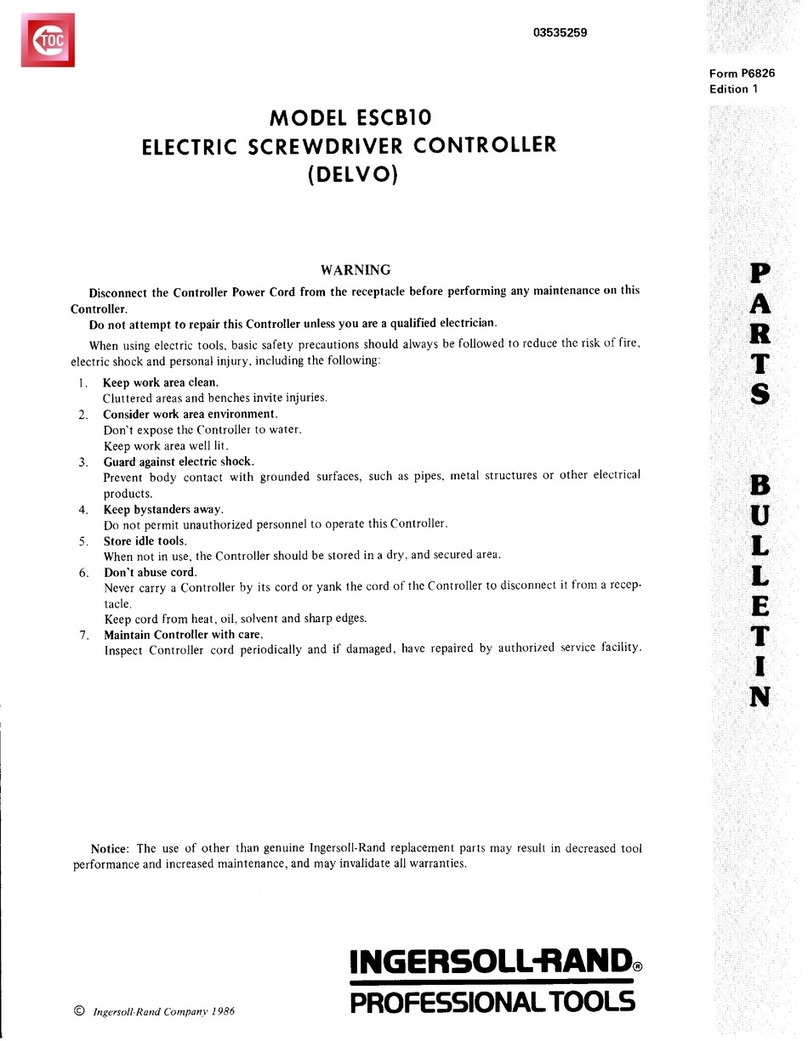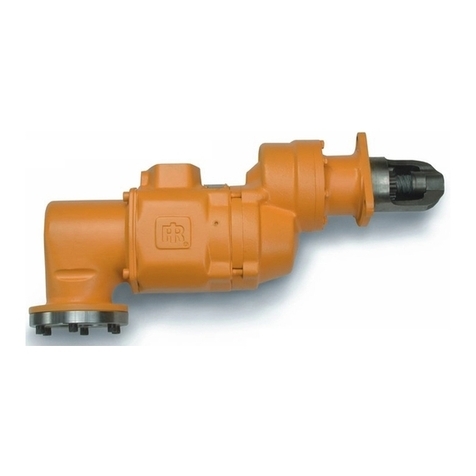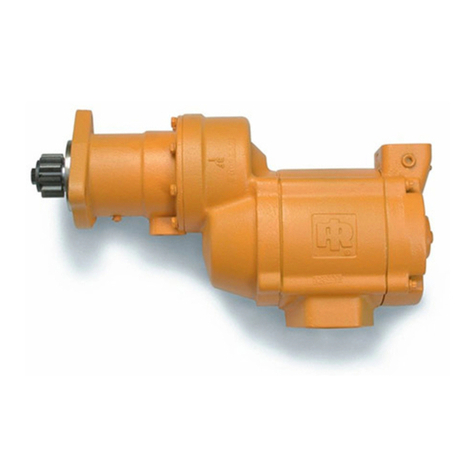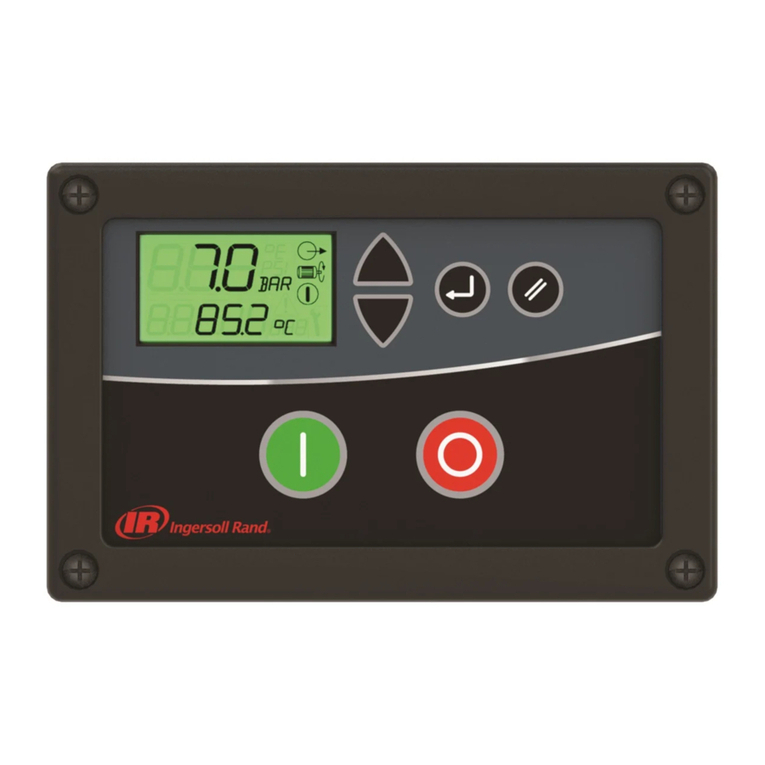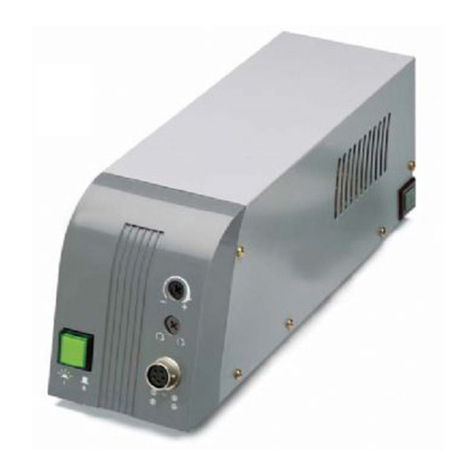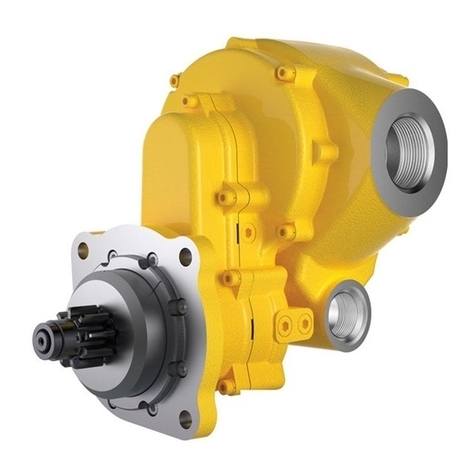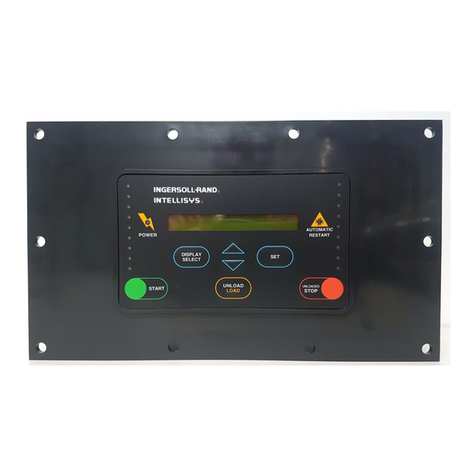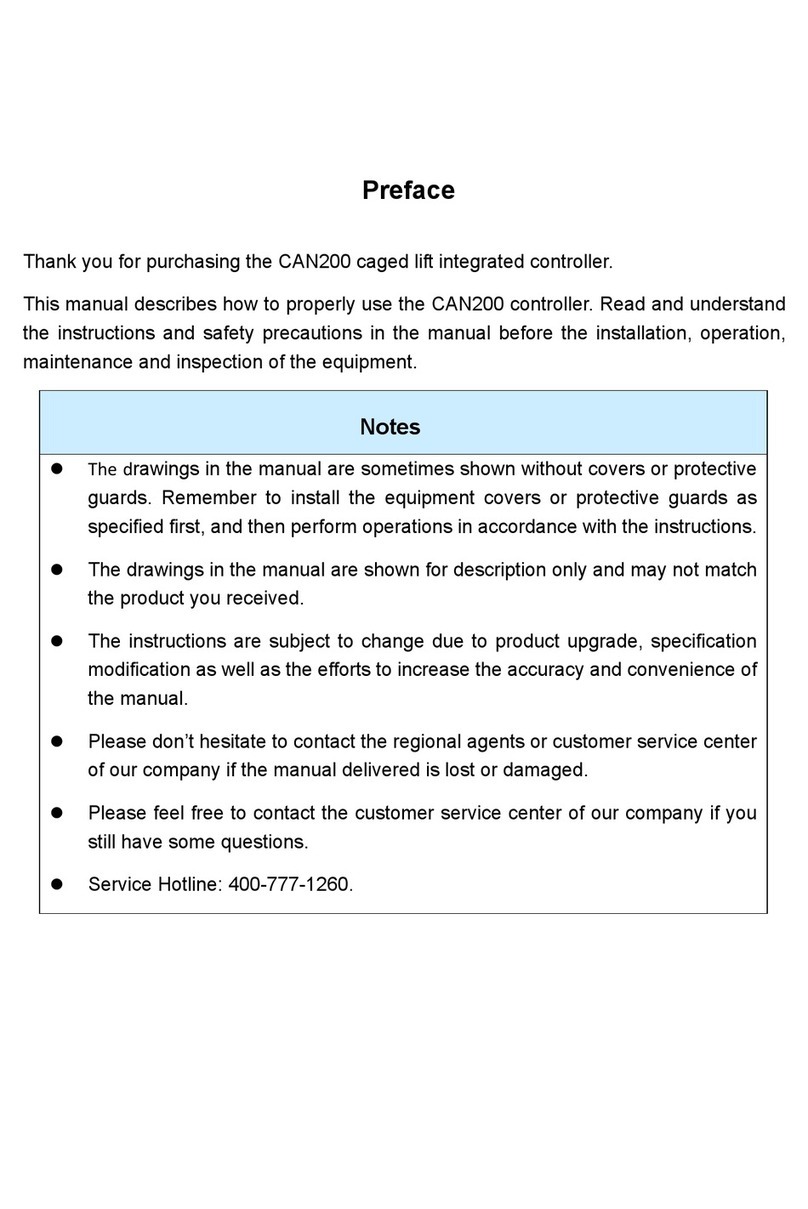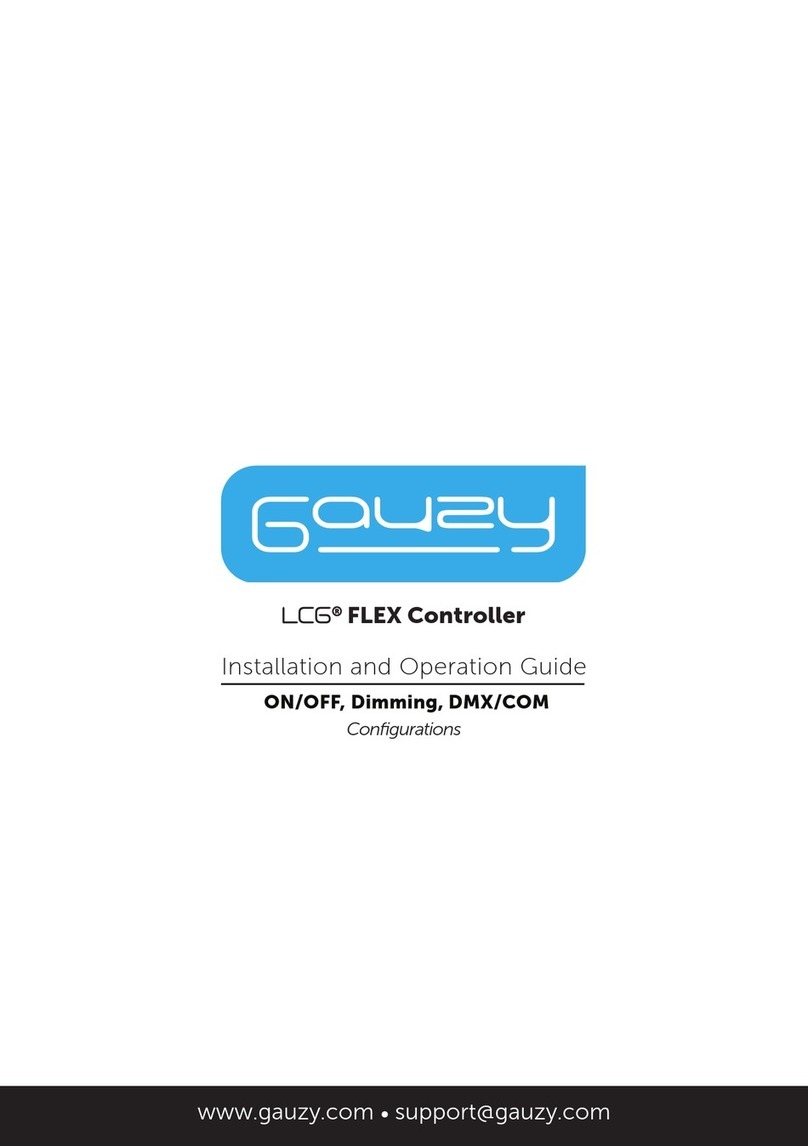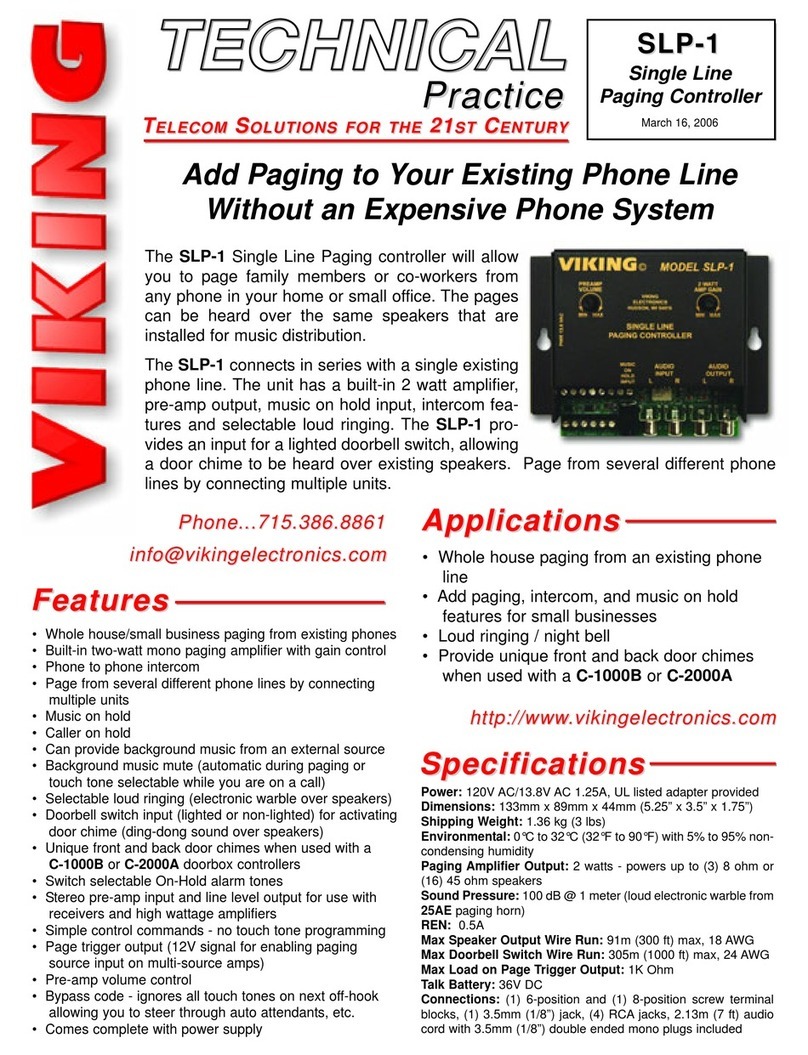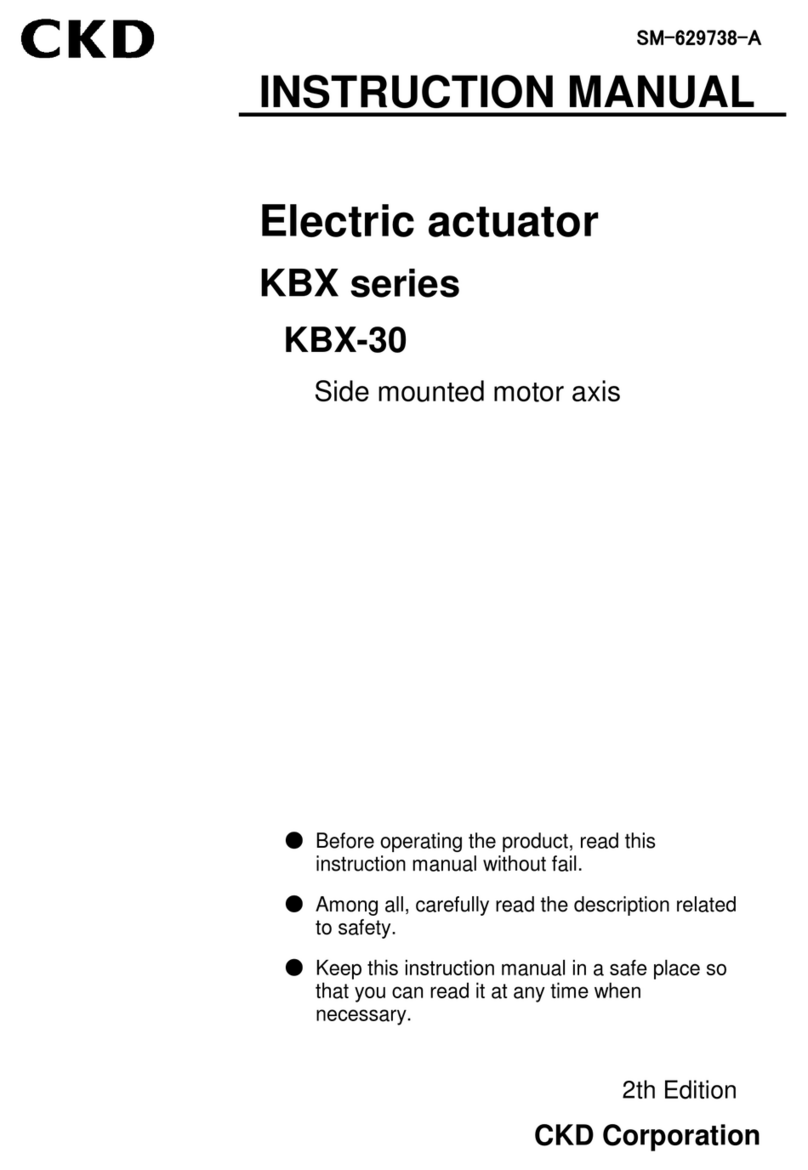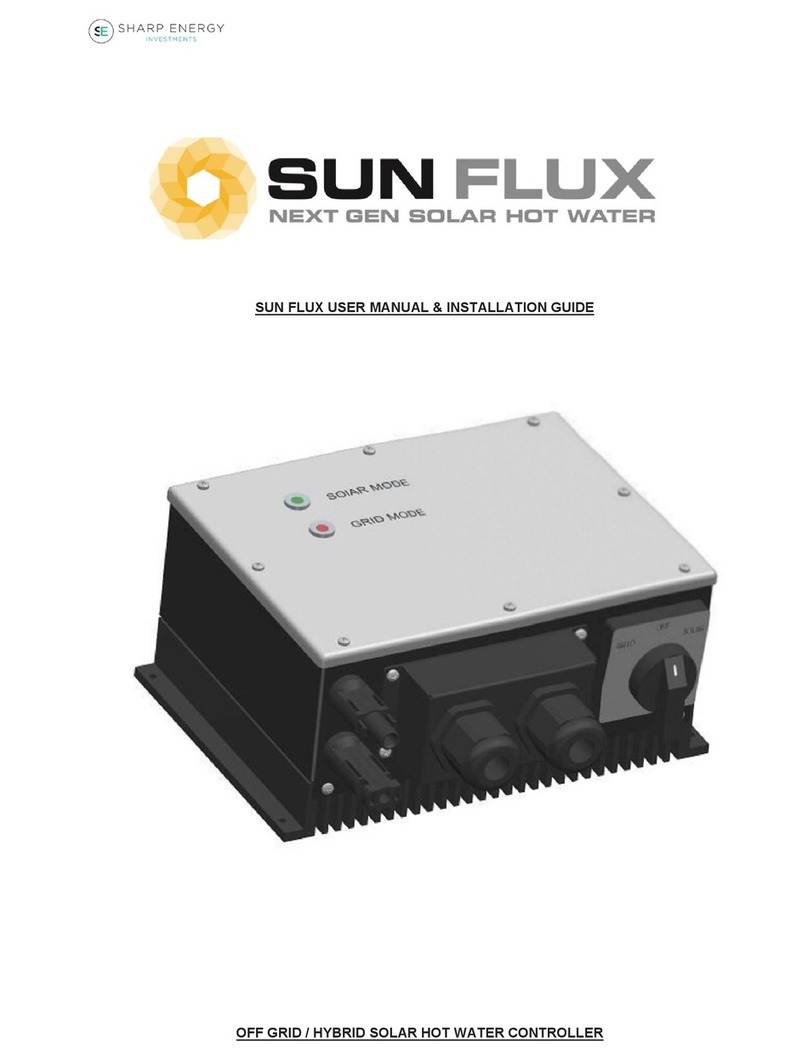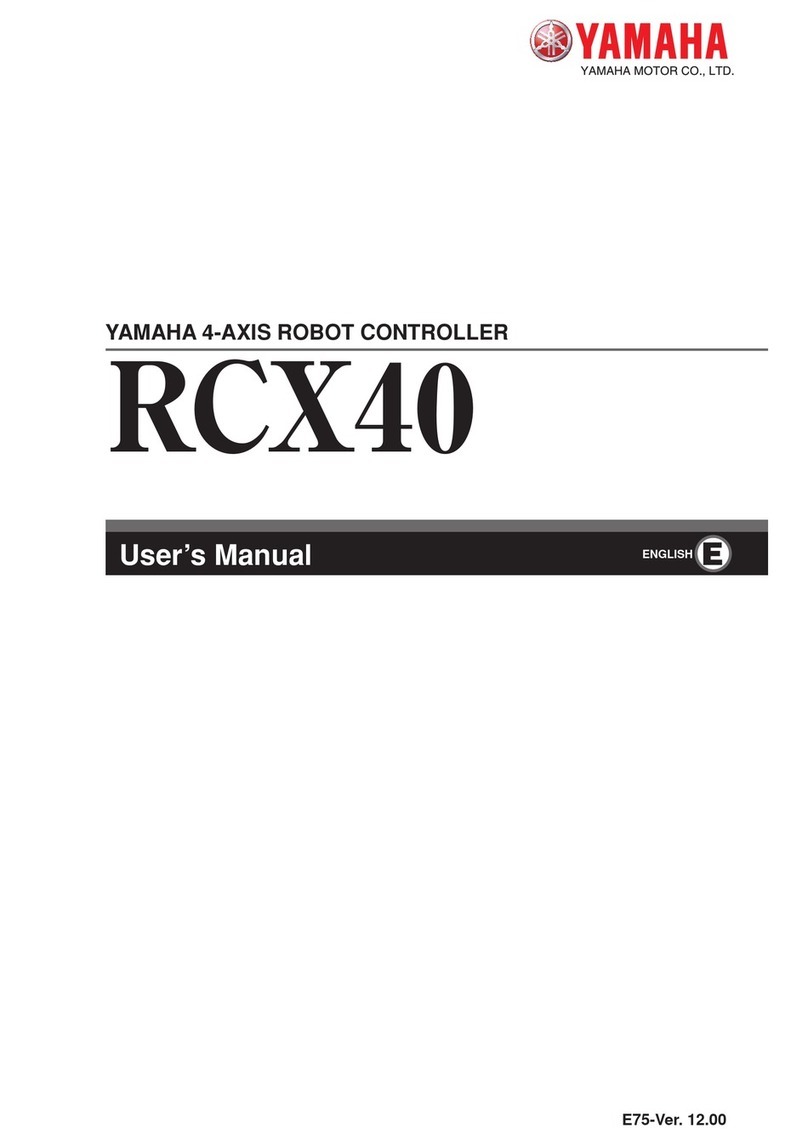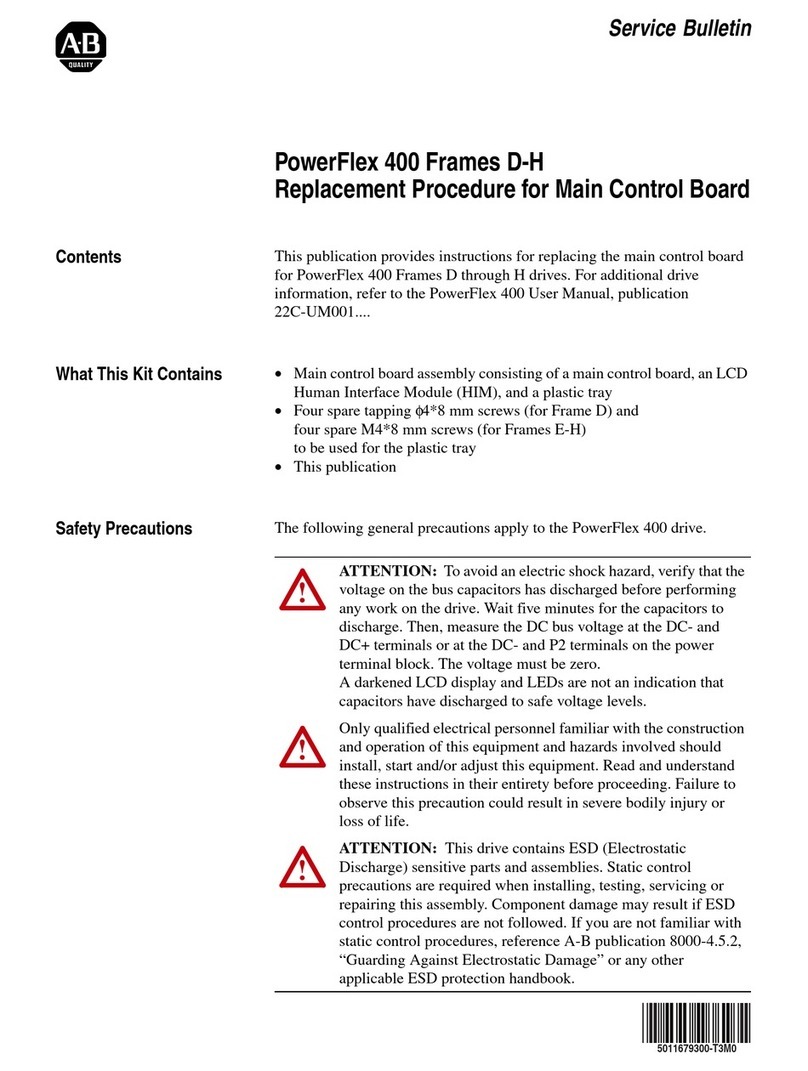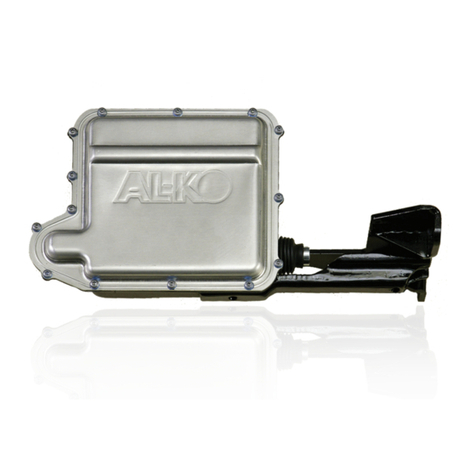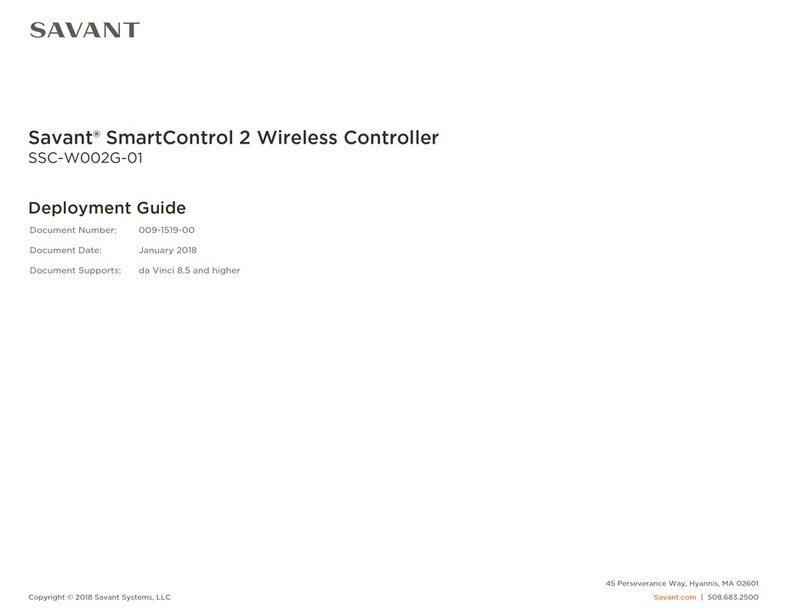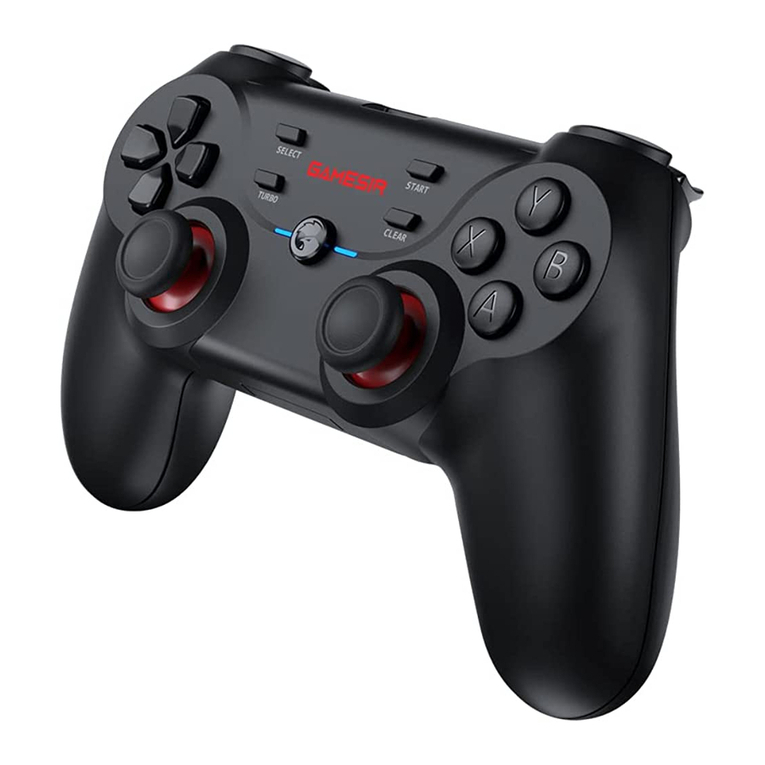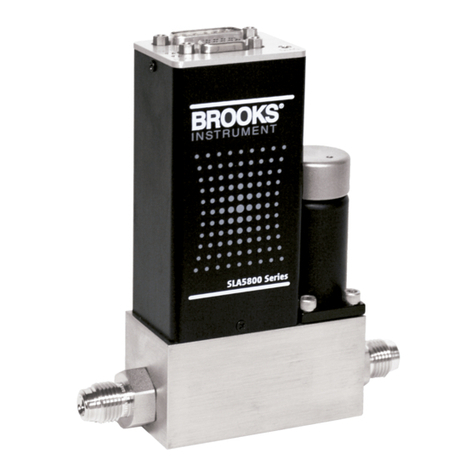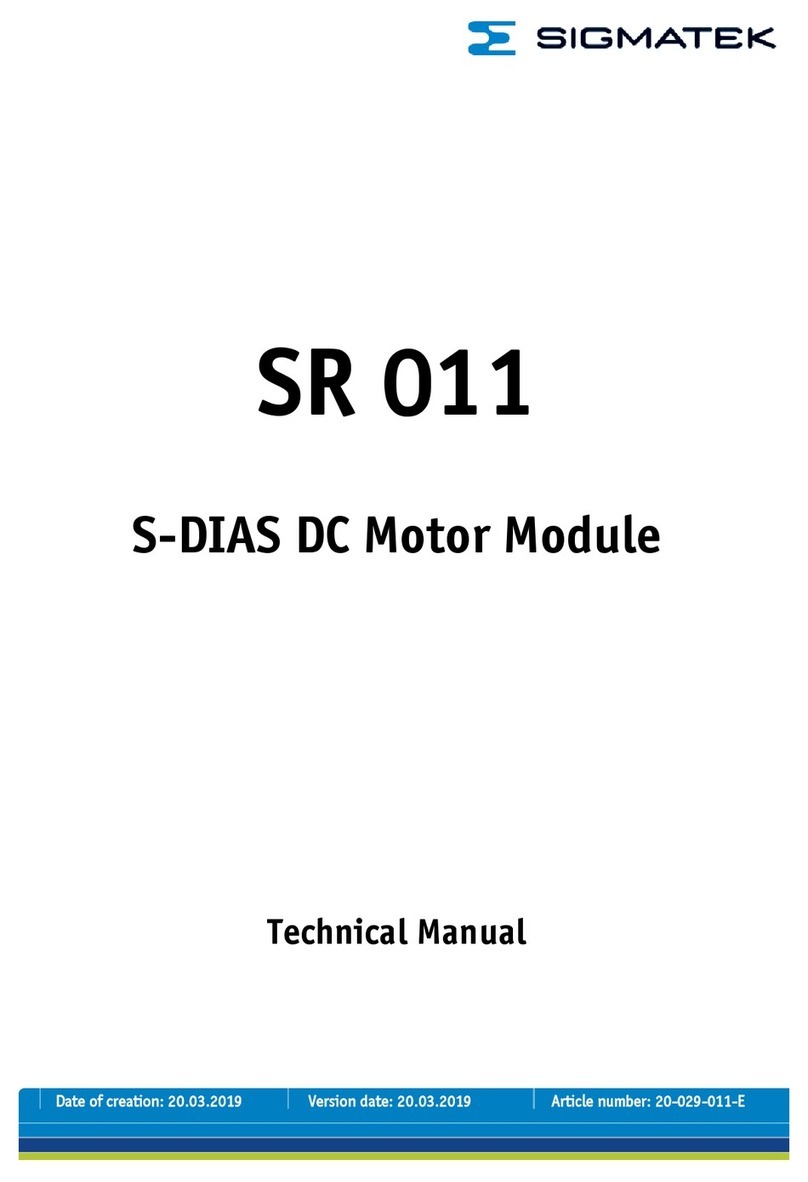
03532488_ed5 3
Orientation of the Air Starter
If the factory orientation will not t your engine due to radial
location of the housing, or location of the inlet and/or exhaust
ports, reorient the starter as follows:
1. Look at the dimension illustration and note that the drive
housing can be located in any one or the eighteen radial
positions relative to the gear case. The exhaust port (motor
housing) can be located in any one of four radial positions
relative to the gear case, and the air inlet (motor housing cover)
can be located in any one of four radial positions relative to the
exhaust port.
2. Study the engine mounting requirements and determine the
required orientation of the drive housing relative to the gear case.
If the drive housing has to be reoriented, remove the twelve drive
housing cap screws and rotate the drive housing to its required
position.
Do not separate the drive housing from the gear case cover.
Reinstall the drive housing cap screws and tighten them to
100 in-lb (11 N m) of torque.
3. Now that you have the drive housing properly oriented relative
to the gear case, notice whether or not the exhaust port will be
at the bottom, and whether or not the inlet port will be favorably
located for hose installation. If either or both of these members
must be reoriented, remove the four motor housing cover cap
screws, and rotate the motor housing and/or motor housing
cover to its desired position.
Do not separate these members from each other or from the
gear case. Reinstall the motor housing cover cap screws and
alternately tighten them to 25 ft-lb (34 N m) of torque.
Mounting the Air Starter
1. Study the piping diagram as shown in Dwg. TPB711. We strongly
recommend that the Starter be connected exactly as shown in
the drawing.
2. The air receiver tank for a Starter installation must have a working
pressure capability equal to or greater than the maximum
pressure at which the Starter will be operated.
3. If you are going to connect to a receiver tank that is already in
service, bleed o the air pressure to the tank.
Bleed o the air pressure through a valve or pet cock. Do
not remove a plug from the tank while the tank is still
pressurized.
Drain o any water that may have accumulated in the bottom of
the tank.
4. Using a 1-1/4”short nipple, install the SRV125 Starter Relay Valve
on the end of the receiver tank as shown in Dwg. TPB_711.
Make certain the connection is made to the inlet side of the
Relay Valve indicated by the word“IN” cast on the valve body.
5. Install the No. SMB-618 Start Control Valve on the dash panel
(for vehicular installation) or some other appropriate panel (for
stationary installation).
6. Attach No. TA-STR-100 Starter Instruction Label to the control
panel adjacent to the Starter Control Valve.
7. Mount the No. 150BMP-1064 Air Pressure Gauge on or adjacent
to the control panel. It should be located where it is readily visible
to the operator of the Control Valve.
8. Connect the Start Control Valve to the Relay Valve with 1/4”hose.
Install a Tee in this line with a short feeder hose to the Pressure
Gauge.
Make certain the hose is connected to the “SUP”side of the
Starter Control Valve.
9. Using a piece of heavy duty garden hose, or some other similar
large diameter hose, run it from the Relay Valve on the receiver to
the starter location on the engine to determine the exact length
of 1-1/4” air hose required.
10. Attach the 1-1/4”air hose to the outlet side of the Relay Valve, and
run the hose through the frame, etc. to its nal position at the
starter location.
11. At this point, determine whether or not it is feasible or practical to
attach the hose to the Starter before or after the Starter is actually
mounted. In many cases, it may be necessary to attach the hose
to the Starter before mounting.
12. If it is at all practical, liberally grease the teeth on the ring gear
with a good, sticky gear grease. This will help promote the life of
the ring gear and Starter Pinion.
13. Hoist or jack the Starter into position, and mount it on the
ywheel bellhousing. Tighten the mounting bolts to 100 ftlb (136
N m) of torque.
14. Install a 1/4” hose line from the “DEL”side of the Starter Control
Valve to the “IN”port on the Starter Drive Housing. On any starter
with the number 83 or 88 in the model number, there will be two
sets of control ports in the Drive Housing. Use the set of control
ports that is above the center of the starter.
15. Install a l/4”hose line from the “OUT” port on the Starter Drive
Housing to the small pipe tapped port on top of the Start Relay
Valve.
16. If the exhaust is not to be piped away, install a No. 150BM-A674
Muer or No. 150BM-A735 Road Splash Deector in the exhaust
port on the Motor Housing of the Starter.
17. Mount an HDL3 Lubricator on or near the Starter as described
under “Installation of HDL3 Lubricator”.
18. Pressurize the complete starting system and check every
connection with a soap bubble test. There must be no leaks.
Barring over the Engine
Occasionally, for setting injectors and/or for timing purposes, it
may be desirable to bar over the engine in such a manner that
any given piston can be stopped at any given location. This is very
easily done with an 150BMP Starter.
1. Disconnect the 1/4”hose at the “OUT’port on the Drive Housing,
plug the hole in the Drive Housing with a 1/4” pipe plug.
2. Remove the 3/8”pipe plug from the center of the Motor Housing
Cover.
3. Engage the Drive Pinion with the ywheel by applying a
minimum of 70 psig (4.8 bar/483 kPa) to the“IN” port on the Drive
Housing.
4. Insert a 5/16” hexagon wrench through the hole in the Motor
Housing Cover to engage the hexagon recess at the rear of the
Rotor.
5. Manually, rotate the Rotor until the engine is cranked to its
desired position.
Installation of the HDL3 lubricator
The HDL3 Lubricator is self-priming and may be installed directly
on the Starter or remotely located. Although the Lubricator is
capable of drawing lubricant from a source 4 ft (1.2 m) lower than
the point of installation, we recommend installing the Lubricator
as close as possible to the oil source.
We recommend using the unpressurized fuel return line as the
source of lubricant. However, oil may be supplied from a separate
receiver or the diesel fuel tank. When the diesel fuel tank is the
lubricant source, install a 10 micron to 50 micron fuel lter (No.
HDL1-47) in the oil supply line at the fuel tank. The lubricant
supply line should be tee’d into the fuel return line with the leg
of the tee going to the lubricator pointed down to insure that the
lubricator does not draw air instead of oil.

